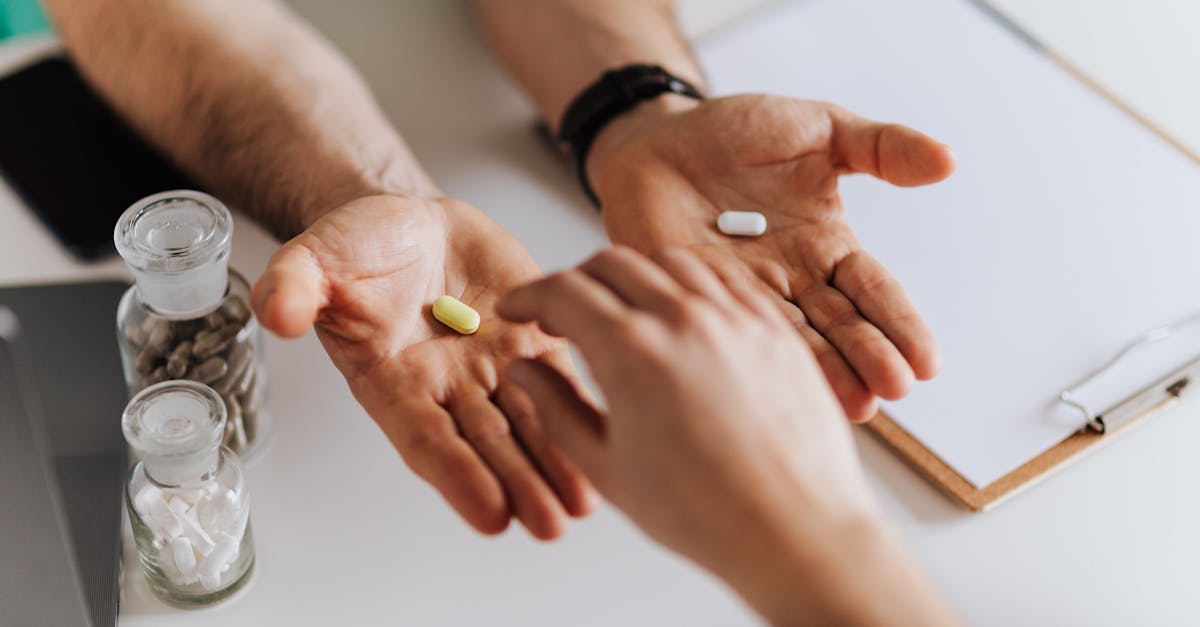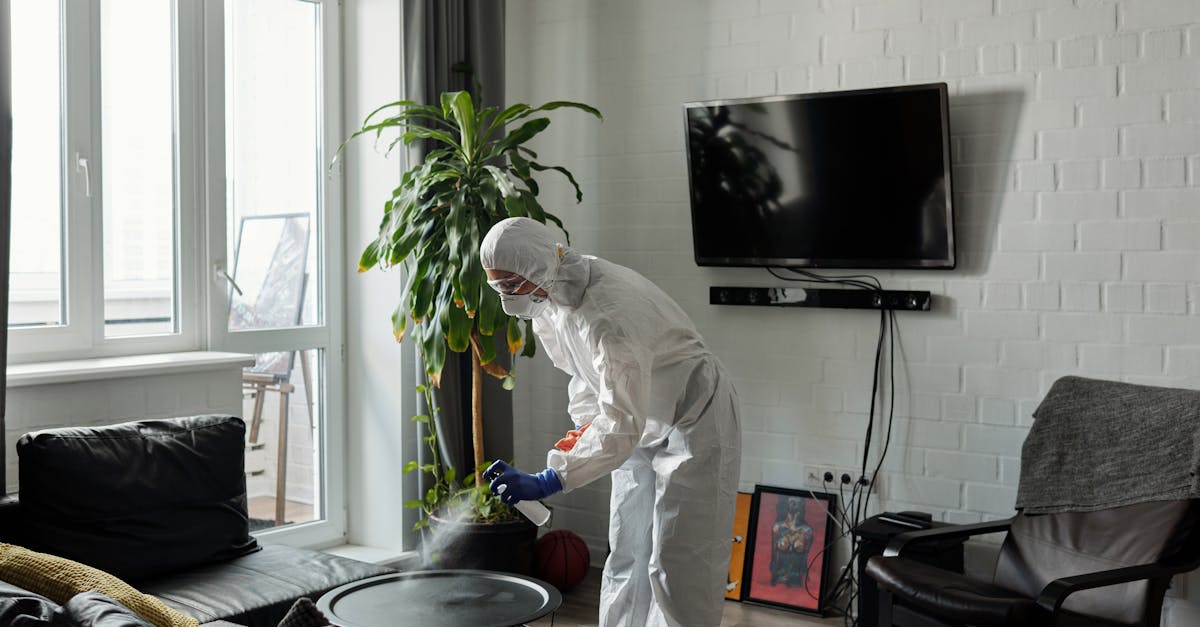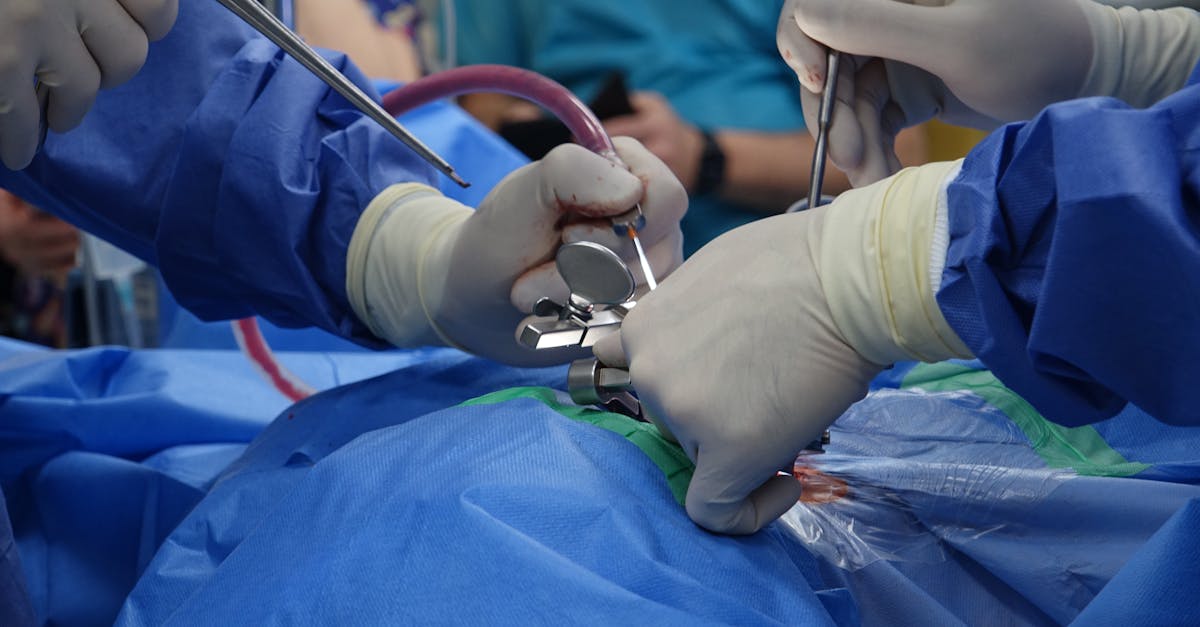|
In Short, preventing scoliosis through non-invasive interventions involves strategies such as physical therapy, bracing, and the Schroth Method. These approaches aim to halt the progression of spinal curvature, offering significant improvements in posture and overall spinal health. These methods work by strengthening the muscles around the spine and promoting healthier alignment. By incorporating lifestyle measures like customized exercise plans and nutritional support, individuals can experience reduced chronic discomfort and enhanced mobility. Overall, the focus is on making scoliosis management accessible, effective, and tailored to each patient’s specific needs. |
Preventing scoliosis through non-invasive interventions incorporates multiple strategies aimed at halting the progression of this spinal curvature. Techniques such as physical therapy, bracing, and the Schroth Method have proven effective in strengthening back muscles and promoting proper posture for patients of all ages. Additionally, lifestyle adjustments including regular check-ups, nutritional support, and tailored exercise plans play a crucial role in reducing chronic discomfort and enhancing mobility.

Discover Non-Invasive Wellness with Pulse Align
At Pulse Align, we understand that achieving optimal well-being is about more than just managing discomfort; it’s about nurturing your body’s natural posture and balance. Our innovative, non-invasive method utilizes gentle, imperceptible pulses that can help restore the body’s natural alignment, leading to an improvement in overall postural health and a reduction in muscle and joint tension.
A Gentle Approach to Recalibration
Pulse Align’s focus is not on targeting specific discomforts directly, but rather on helping your body recalibrate itself naturally. This gentle approach allows clients to regain muscle tone symmetry and promotes a sense of overall well-being, often leading to improved comfort throughout daily activities and a noticeable enhancement in posture.
Personalized Experiences, Positive Outcomes
Our commitment to a personalized experience is evident in the feedback we receive from our valued clients. Many have shared their journeys with Pulse Align, highlighting noticeable improvements in neck and back tension, postural balance, and overall wellness, all achieved through our supportive and caring methodology. These testimonials affirm our belief in the body’s capacity to restore balance naturally, resulting in enhanced quality of life.
Join Us on Your Wellness Journey
We invite you to explore how Pulse Align can fit into your family’s wellness journey. Visit our website to learn more about our services, find nearby locations—including La Prairie, Mont-Royal, and Terrebonne—and easily book a consultation for yourself or your loved ones. Remember, our services complement your existing healthcare and help foster a well-rounded approach to well-being.
With Pulse Align, embrace a safe, non-invasive, and family-friendly approach to restoring balance and improving posture. Schedule your appointment today and take the first step towards a healthier, happier you!
- Posture Awareness: Regularly check and adjust your posture during daily activities.
- Physical Therapy: Engage in tailored therapy focused on strengthening back muscles.
- Schroth Method: Practice specialized exercises aimed at correcting individual spinal curvature.
- Bracing: Wear a brace as recommended to support spinal alignment during growth phases.
- Customized Exercise Plans: Incorporate targeted workouts that enhance flexibility and core strength.
- Nutritional Support: Maintain a balanced diet rich in vitamins and minerals to promote bone health.
- Regular Check-Ups: Schedule consistent appointments with healthcare professionals to monitor posture.
- Mindfulness Practices: Utilize techniques that enhance awareness of body mechanics.
- Bodyweight Exercises: Include simple moves to promote balance and flexibility without strain.

Scoliosis, characterized by an abnormal curvature of the spine, can have serious implications on overall health. Preventive measures are crucial in managing this condition effectively, and numerous non-invasive interventions can support spinal health. By focusing on physical therapy, bracing, exercise, and nutrition, individuals can proactively maintain their posture and mitigate the progression of scoliosis.
Monitoring and Early Detection
One of the most important non-invasive approaches to preventing scoliosis involves regular monitoring. Parents and caregivers should observe children’s posture closely, looking for signs such as uneven shoulders or hips. Frequent check-ups with healthcare professionals can lead to early detection and timely intervention, which may prevent the condition from worsening. In mild cases, consistent observation along with periodic imaging may suffice to keep scoliosis at bay.
Physical Therapy
Physical therapy plays a vital role in bending the curve of scoliosis through personalized interventions. These therapies focus on strengthening the muscles around the spine, enhancing overall posture, and improving flexibility. Programs that incorporate specialized exercises, such as the Schroth Method, work to correct spinal alignment and raise awareness of body mechanics. Engaging in these tailored routines can provide significant relief and empower individuals to take ownership of their spinal health.
Custom Exercise Plans
Incorporating custom exercise plans is essential for scoliosis prevention. Activities like yoga and Pilates emphasize strengthening the core, improving flexibility, and fostering awareness of one’s body. Targeted workouts are designed to engage muscles naturally, supporting better balance and enhancing posture. By establishing a routine that promotes spinal health, individuals can significantly reduce the risk of developing or worsening scoliosis.
Bracing Strategies
Bracing is a well-accepted non-surgical option particularly effective for children and adolescents, as it helps maintain proper alignment during crucial growth periods. Appropriate bracing can apply gentle pressure on the spine, preventing further curvature and encouraging healthy posture. Healthcare professionals will recommend the type and duration of use based on the severity of the curvature, making this method a tailored solution.
Nutrition and Lifestyle
A balanced nutritional approach serves as a crucial component for overall spine health. An adequate diet rich in vitamins, minerals, and nutrients is fundamental for bone strength and development. Emphasizing whole foods, including fruits, vegetables, and lean proteins, can make a significant difference in maintaining a healthy spine. Regular exercise routines, combined with proper nutrition, promote a holistic approach to preventing scoliosis.
Mindfulness and Body Awareness
Building mindfulness around body mechanics can greatly contribute to preventing scoliosis. Encouraging children and adolescents to be aware of their posture during daily activities fosters lifelong habits supportive of spinal health. Practices such as bodyweight exercises or engaging in sports emphasize coordination and balance, promoting synergy within their physical development. This holistic approach addresses both physical and mental aspects of well-being.
Preventing scoliosis requires an integrated approach that emphasizes proactive measures, education, and personalized interventions. By incorporating non-invasive strategies such as monitoring, physical therapy, customized exercise, bracing, and nutrition, individuals can take significant strides toward maintaining their spinal health. Embracing a holistic framework, aligned with the principles of Pulse Align, not only fosters neuromuscular health but also contributes to a balanced and harmonious life. Through these methods, we can inspire a culture of wellness and empower our communities to prioritize their health.
| Approach | Description |
|---|---|
| Posture Awareness | Enhances body alignment through mindful adjustments in daily activities. |
| Physical Therapy | Focuses on tailored exercises that promote muscle strength and improve stability. |
| Schroth Method | A customized exercise regime tailored for individualized posture enhancement. |
| Bracing | Provides supportive adjustments to encourage healthy posture naturally. |
| Yoga | Utilizes stretching and strengthening poses to enhance flexibility and body balance. |
| Pilates | Promotes core strength and encourages natural alignment for overall wellness. |
| Nutrition | Emphasizes nutrient-rich foods to support overall health and well-being. |
| Regular Check-Ups | Encourages ongoing awareness and support for maintaining optimal posture. |
| Mindfulness Practices | Fosters a deeper connection with body mechanics, promoting proactive alignment. |
| Bodyweight Exercises | Engages natural movements to support balance and improve daily functional activities. |

Empowering Wellness Journeys with Non-Invasive Approaches
At Pulse Align, clients from across various regions, including La Prairie and Mont-Royal, have embraced the non-invasive solutions we offer for preventing scoliosis. Many individuals have shared how our unique approach enables their bodies to recalibrate and restore natural balance, paving the way for improved wellness. These methods have often led to genuine transformations in their daily lives, enhancing both posture and overall body function.
One client from Terrebonne remarked, “Since starting my sessions at Pulse Align, I’ve felt a noticeable shift in my body. The gentle techniques have not only improved my posture, but I’ve also experienced a significant reduction in discomfort.” Such feedback resonates with the essence of our philosophy: that everyone deserves to feel strong and stable naturally.
In regions like Deux-Montagnes and Sainte-Marie, clients have expressed gratitude for our holistic methods, which combine practical exercises and awareness training. “I never thought that simple adjustments could bring me so much relief,” a client from Châteauguay shared, emphasizing how our approach aligned with their specific needs. The personalized suggestions allowed them to cultivate a proactive relationship with their health.
Moreover, those in Chicoutimi have echoed similar sentiments. “Pulse Align has changed the way I view my health. I feel more in tune with my body, and it’s liberating,” stated a local resident. This connection to self-awareness is a vital part of the recovery journey we nurture through our services.
Our commitment extends beyond localized feedback; we actively collaborate with healthcare teams to ensure our clients and their families can achieve comprehensive wellness support. Whether in Charlesbourg or the vibrant streets of Saint-Jérôme, the experiences of our clients showcase the strong foundations built through our non-invasive interventions.
If you’re eager to explore how these transformative experiences could benefit you or a loved one, we invite you to visit Our Clinics and discover the supportive solutions that Pulse Align offers. Join the growing community of individuals who have taken charge of their wellness journey through our unique approach.
Scoliosis, an abnormal curvature of the spine, can be a concerning condition whether it manifests in children or adults. While certain cases may require surgical intervention, numerous non-invasive approaches have gained traction as effective management methods to prevent the progression of this ailment. These strategies focus on early detection, lifestyle adjustments, and holistic treatments that promote overall spinal health.
Among the key professionals contributing to the landscape of non-invasive scoliosis treatment is Dr. Sylvain Desforges. He is not only an expert in osteopathy, naturopathy, and manual medicine but also the founding president of TAGMED clinics and the ACMA association. With a career dedicated to healthcare innovation, Dr. Desforges’ mission is to provide evidence-based care aimed at optimizing his patients’ health and well-being.
One of the primary strategies for scoliosis prevention revolves around physical therapy. Targeted exercises designed to strengthen the core and back muscles can enhance posture and spinal alignment. By incorporating tailored exercise regimens, individuals can significantly decrease the risk of developing severe spinal curvature. Hospitals, healthcare facilities, and private clinics in areas such as Montréal, Terrebonne, and Mont-Royal offer specialized physical therapy programs that focus on maintaining spinal integrity.
Bracing is another effective non-invasive approach to managing scoliosis, particularly in adolescents during their growth spurts. High-quality braces are designed to prevent the curvature from worsening and are customized to fit each patient’s unique spinal contours. This preventative measure is especially crucial as children develop, enabling them to maintain appropriate alignment while their bodies change.
In addition to traditional treatment modalities, innovative techniques such as the Schroth Method are gaining popularity. This specialized form of physical therapy emphasizes breathing patterns combined with specific movements tailored to correct abnormal spinal formations. Practitioners can help individuals with scoliosis not only understand their condition but also empower them to take active steps toward correction.
Adequate nutrition also plays a vital role in preventing scoliosis. A diet rich in essential vitamins and minerals supports bone and muscle health, providing the necessary foundation for a strong spine. Emphasizing whole foods—such as fruits, vegetables, whole grains, and lean proteins—ensures that patients receive the nutrients they need to maximize their physical potential.
Furthermore, regular check-ups with healthcare professionals are pivotal for early detection and intervention. Monitoring spinal growth and health through periodic assessments allows for timely actions if any signs of scoliosis arise. Parents should remain vigilant regarding their children’s posture and any visible asymmetries, ensuring they seek medical advice as needed.
Dr. Sylvain Desforges’ commitment to innovative healthcare is reflected in his work at TAGMED clinics, where he integrates advanced technologies such as spinal decompression, laser, and shockwave therapy into patient care. These non-invasive treatments not only address existing issues but also play a preventative role in ensuring overall spinal health. Dr. Desforges’ dedication serves as a beacon for patients seeking non-invasive solutions that effectively manage chronic pain while pursuing optimal well-being.
Overall, the combination of preventive measures, personalized therapy, and lifestyle modifications can contribute significantly to reducing the risk of scoliosis. By embracing these strategies, individuals can take proactive steps toward maintaining a healthy, balanced spine.
Enhancing Patient Conditions with TAGMED Neurodecompression Technology
Mechanism of Action
The TAGMED neurodecompression technology operates by applying a controlled and progressive traction force on the spinal column. This innovative approach serves to create an increased space between the vertebrae, significantly reducing the pressure on both the intervertebral discs and the nerve roots. By facilitating this space, the technique promotes better fluid circulation in the targeted area, which is crucial for pain relief. As the pressure on these sensitive structures is alleviated, the associated inflammation is also reduced. Consequently, this process contributes not only to decreasing discomfort but also to enhancing overall spinal health.
Specific Benefits
In terms of relieving chronic pain, the TAGMED method has proven effective for patients suffering from conditions such as disc herniation, disc bulging, and moderate to severe spinal or foraminal stenosis. The non-invasive nature of this technique allows individuals to experience considerable pain relief without the complications associated with surgical procedures. By optimally redistributing the load on the spinal structures and enhancing fluid movement around the discs, patients can often notice improvements in mobility and a reduction in chronic discomfort. As a result, the potential for a faster recovery paired with an increased quality of life stands out as a significant benefit of this technology.
Comparison with Other Treatments
When comparing the TAGMED neurodecompression technology to conventional treatment options such as painkillers, corticosteroid injections, or even surgical interventions, several key advantages emerge. Traditional pain management strategies may come with risks like side effects from medication or complications from invasive procedures. In contrast, the TAGMED method does not require invasive interventions, which means that patients face substantially lower risks while often enjoying a quicker recovery process. Many individuals undergoing neurodecompression report a swifter return to everyday activities, making it a compelling alternative.
Case Studies and Testimonials
Many patients have shared uplifting experiences following treatment with TAGMED neurodecompression technology. For instance, one patient who had experienced chronic lower back pain due to a herniated disc reported a sustained decline in pain after just a few sessions. Another individual highlighted their ability to return to daily activities with greater ease and comfort after receiving neurodecompression treatment. Testimonials consistently reflect a diminished reliance on pain medications, as clients express gratitude for the positive impact on their overall well-being and day-to-day function.
Conclusion on Ways to Prevent Scoliosis: Non-Invasive Approaches
The journey towards preventing scoliosis can significantly benefit from a comprehensive understanding of non-invasive approaches. These methods are not only accessible but also adaptable for individuals of all ages, making them an invaluable asset for both children and adults. Physical therapy, for instance, serves as a prime intervention. Tailored to address muscle imbalances and enhance postural awareness, physical therapy empowers patients to actively participate in their health, fostering lifelong habits that promote spinal health.
Bracing continues to play a critical role in non-invasive scoliosis management, particularly for growing children. By providing needed support during crucial growth periods, braces help prevent the progression of spinal curvature, thus encouraging better alignment. Coupled with techniques like the Schroth Method, which focuses on individualized exercises, the effectiveness of these methods increases exponentially. They harness the body’s natural ability to correct itself, encouraging a proactive approach to posture improvement.
Moreover, embracing a lifestyle that incorporates regular check-ups with healthcare professionals promotes early detection and intervention. Regular monitoring is essential; it facilitates timely adjustments to treatment plans, ensuring that progression is managed efficiently. Alongside, incorporating a well-rounded nutrition plan can provide the necessary support for muscle and bone health, which is pivotal in managing scoliosis.
The integration of exercise, regular evaluations, and nutritious eating creates a robust framework for scoliosis prevention. By fostering a culture of awareness and proactivity, individuals can take charge of their spinal health. Thus, adopting these non-invasive strategies not only alleviates discomfort but also enhances overall quality of life, encouraging a healthier, balanced lifestyle.

Do you suffer from a chronic condition that responds little or not at all to conservative treatments?
At Pulse Align, we present an innovative, non-invasive approach to wellness designed to help restore your body’s natural balance and posture through gentle, imperceptible pulses. This method is centered around fostering muscle tone symmetry, which can lead to reduced tension and imbalance, ultimately contributing to your overall well-being. With a focus on promoting holistic health, Pulse Align seeks to create a supportive environment for individuals and their families on their journey toward enhanced stability and comfort.
Our philosophy does not concentrate directly on discomfort or specific conditions, but rather emphasizes the body’s innate ability to recalibrate itself naturally. Clients often report remarkable improvements in their overall comfort and posture, reflecting a gradual yet powerful transformation in their well-being. By engaging with our gentle techniques, many discover a new level of ease that benefits their daily lives.
At Pulse Align, we pride ourselves on a personalized approach tailored to the unique needs of each client. Numerous testimonials highlight significant enhancements in physical stability and comfort, with many noting reductions in tension in the neck and back. Families who have embraced our services often express gratitude for the positive impact on their overall wellness—reaffirming our commitment to fostering improved health through this non-invasive methodology.
We invite you to explore the Pulse Align website to learn more about our distinctive services and find locations near you, including La Prairie, Mont-Royal, Terrebonne, and other cities. When you’re ready, you can easily book a consultation for yourself or a family member. Remember, our techniques complement existing health services, providing a holistic approach to wellness for all ages. Discover how Pulse Align can effectively support your journey toward enhanced well-being—visit Pulse Align today and take the first step toward better posture and comfort for you and your family.
Frequently Asked Questions
Posture Imbalance, body misalignment
Can I correct postural imbalance at home?
Yes, targeted exercises, stretching, massage, and being mindful of your daily posture can help, but professional guidance is recommended.
Does being overweight affect posture?
Yes, excess weight, especially around the abdomen, can shift the body’s center of gravity and increase joint strain.
Are massages helpful for improving body alignment?
Massage can relax tense muscles, improve circulation, and facilitate postural adjustments, especially combined with targeted exercises.
Can poor posture cause jaw pain?
Yes, improper head and neck alignment may create tension in the jaw, leading to pain or TMJ issues.
Does office work contribute to misalignment?
Often, yes. Sitting for long hours in front of a screen can lead to a forward head position, rounded shoulders, and other postural issues.
Can mobile apps help improve posture?
Yes, some apps offer reminders, exercises, and visual assessments to help correct posture.
Can postural imbalance cause fatigue?
Yes, maintaining poor posture requires more muscular effort, leading to increased fatigue throughout the day.
Are proprioception exercises useful?
Yes, they help improve body awareness, balance, and coordination, which promote better posture.
Can postural imbalance cause digestive issues?
In some cases, poor posture can compress internal organs and influence digestion, causing discomfort and bloating.
Can dancing improve posture?
Dancing, particularly ballet, encourages an upright posture, better balance, and increased body awareness.
Gabriel Dupuis knows that life’s pains can often be traced back to the way we sit, stand, and move. As a Posture Awareness Advocate at Pulse Align, he’s committed to showing readers how small adjustments in alignment can bring big relief. With a blend of empathy and evidence-based research, Gabriel translates the science of posture into practical steps that help ease discomfort, protect against injury, and restore natural balance. He believes that everyone deserves to feel strong, stable, and pain-free—and through his writing, he offers the guidance and encouragement to help readers reach that goal.
Medical Disclaimer
The information and advice provided on this site do not replace the advice, diagnosis, or treatment of a healthcare professional. Please note that the author of this article is neither a doctor nor a specialist in a medical specialty as defined by the Collège des médecins du Québec. Manual medicine, functional medicine, and sports medicine as described on this site exclude any medical treatment or diagnosis made by a doctor or medical specialist. Always consult your doctor for any medical questions. For more details, please read our complete Legal Notice.




